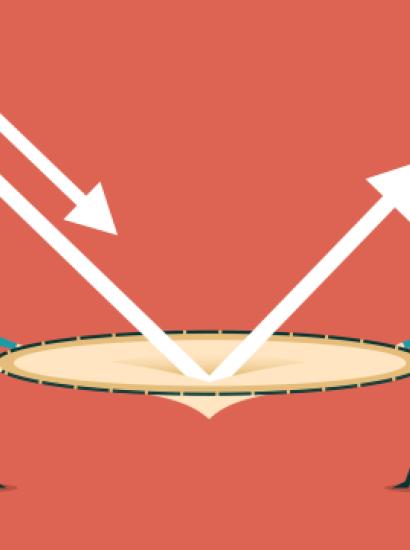- Economics
- Politics, Institutions, and Public Opinion
From the mid-1970s to the early 1980s, a group of economists, journalists, and politicians formed or became adherents of a school of thought called “supply-side economics.” Its three most prominent economists were Arthur Laffer, then at the University of Southern California; Alan Reynolds, then at First National Bank of Chicago; and Paul Craig Roberts, a prominent staff member to various Republican congressional committees and, early in the Reagan administration, the assistant secretary of the Treasury for economic policy.
The journalist who was most committed to supply-side thought was the late Jude Wanniski, an editorial writer for the Wall Street Journal, and Jack Kemp, a Buffalo-area Republican congressman, was the group’s best-known politician. One other early supply-sider, an historian who became a bona fide economist, was Kemp’s aide Bruce Bartlett.
Their argument was basically an application of one of the most important principles in economics: incentives affect behavior. Specifically, they focused on the harm that high marginal tax rates inflict on an economy and the growth in an economy’s real output that can occur if the highest marginal tax rates are reduced.
The major pluses of their approach have been three. First, they came up with a way to dramatize the fact that an x percent increase in tax rates--even if it leads to higher tax revenues--will cause less than, and possibly much less than, an x percent increase in tax revenues. This was best illustrated by Arthur Laffer, with his Laffer Curve.
Second, the supply-side economists’ focus on incentives made unprecedentedly prominent the harmful effects of high marginal tax rates. As a result, in the early to mid-1980s, the supply siders’ views caused a fair number of mainstream members of an elitist economics profession to examine the importance of high marginal tax rates. Third, supply siders had a substantial effect on thinking about taxation in the policy world and on actual policy results, the main result being a drop in marginal tax rates in the United States and, subsequently, in many parts of the world.
Unfortunately, there were two minuses. The most prominent followers and adherents of the supply-side school typically gave short shrift, often bordering on outright hostility, to the importance of reining in government spending. Second, and related to the first: because supply-side thinking was centered in the Republican Party, many members of that party--which had long expressed concern about high government spending and high government deficits--downplayed the importance of cutting (or even reducing the growth of) government spending.
Consider first the Laffer Curve, which shows the relationship between tax rates and tax revenues. At a zero tax rate, the government would collect, of course, zero revenues. As the government raised tax rates above zero, it would collect revenue. But at a 100 percent tax rate, no one would produce anything, or, more exactly, no one would declare that he or she produced anything, and so there would be zero visible output to tax. The result would also be zero government revenue. Those facts imply that at some tax rate between 0 and 100 percent, the government maximizes tax revenues. By increasing tax rates past that point, it will actually reduce government revenues. Put those facts together and the result is necessarily a curve similar to the one that Arthur Laffer drew on a cocktail napkin at a meeting in the early 1970s with Dick Cheney, Donald Rumsfeld, and Jude Wanniski. If the government is in the “prohibitive region” of the Laffer Curve where further increases in tax rates reduce revenues, it can actually cut tax rates and increase government revenues.
Although many economists ridiculed Laffer for his curve, it had to be correct based on simple mathematics. The two important questions about the Laffer Curve back in the 1970s are still the two most important ones now, and the Laffer Curve formulation got people thinking about both. First, where are we on the Laffer Curve? Second, what is the effect of high marginal tax rates on incentives and on something that economists call deadweight loss?
There’s a good case to be made that Americans in the highest tax brackets in the late 1970s were in the prohibitive region. The case is both theoretical and empirical. At the time, the top federal marginal tax rate was 70 percent. Consider someone in that bracket. If that taxpayer earns an additional dollar of income, he keeps only 30 cents. Now, if his marginal tax rate is cut to 50 percent, as President Reagan’s and Congress’s Economic Recovery Tax Act of 1981 did, he keeps 50 cents of that additional dollar of income. His incentive to earn an additional dollar rises by 66.7 percent! It is not hard to imagine that this substantially increased incentive would cause him to earn that additional dollar.
But we don’t need to imagine. In 1983, Lawrence B. Lindsey, who was the tax economist at President Reagan’s Council of Economic Advisers, examined tax data on the effects of the 1981 tax cut that caused him to take the supply siders seriously. He turned his research into a Ph.D. dissertation, which, incidentally, his Harvard advisers Martin Feldstein and Lawrence H. Summers, signed. He drew on that dissertation to write a book in 1990 called The Growth Experiment: How the New Tax Policy is Transforming the U.S. Economy.
In that book and his earlier work, Lindsey compared taxes paid by various income groups between 1982 and 1984 with the taxes they would have paid if the tax cut had not occurred. How did he know what would have happened? He didn't. But he did a careful job of coming up with a baseline estimate. To get that estimate, Lindsey assumed that all macroeconomic conditions during those three years would have been the same had no tax cut occurred. This means that he assumed that the tax cut would not lead to higher growth, an assumption that biased the outcome in favor of no positive revenue effect. But even with that pessimistic assumption, Lindsey found a positive revenue effect for taxpayers with an adjusted gross income of $200,000 or more. (To put the $200,000 in perspective, that translates into $494,000 in 2019 dollars.) Specifically, revenues were higher by $0.67 billion in 1982, $2.72 billion in 1983, and $8.00 billion in 1984. In short, the highest-income taxpayers were in the prohibitive region of the Laffer Curve; cutting their tax rates increased the amount of revenue that the federal government collected from them.
Note that the revenues were higher than the baseline by increasing amounts over time. This makes sense. Economists often emphasize that a given change in incentives will cause bigger changes in the long run than in the short run.
I was one of the early skeptics on the issue of the revenue effects of cuts in marginal tax rates. In a 1981 article, I argued that the effect of a cut in marginal tax rates on the amount of labor people would supply was not nearly enough to cause a cut in marginal tax rates to increase revenue. I was right in the aggregate, but the high-income people facing very high marginal tax rates were a special case.
It turns out, though, according to Lindsey, that the main supply-side effect that caused higher-income people’s income to rise a lot was not an increase in their labor supply but a shift from being paid more in cash and less in fringe benefits. That makes sense. Whether the high-income worker is an employee or is self-employed, the attraction of an untaxed fringe benefit is much greater when you avoid a 70 percent marginal tax rate than when you avoid a 50 percent rate.
But even though, for most taxpayers, the cuts in tax rates reduced the amount of revenue the government got from them, the tax cut did have good incentive effects. Even for them, their incentive to work a little harder and/or to take cash instead of fringe benefits was higher.
Another good effect the supply siders had was to get mainstream economists discussing more the harm done by high marginal tax rates. The term economists use for that harm is deadweight loss, and one of the prominent people who did much work on the deadweight loss from taxes was the late Harvard economist Martin Feldstein. In a 2010 Washington Post survey of economists that asked what the revenue-maximizing tax rate was, Feldstein answered with what really mattered:
Why look for the rate that maximizes revenue? As the tax rate rises, the "deadweight loss" (real loss to the economy) rises so as the rate gets close to maximizing revenue the loss to the economy exceeds the gain in revenue.... I dislike budget deficits as much as anyone else. But would I really want to give up say $1 billion of GDP in order to reduce the deficit by $100 million? No. National income is a goal in itself. That is what drives consumption and our standard of living.
But it wasn’t just Feldstein who thought this way. The supply siders’ effect on thinking has been long term. In his 2010 book The New American Economy, supply sider Bruce Bartlett documented a rich economics literature that takes supply-side economics seriously. Bartlett’s cites to economic studies are too numerous to mention here, but the following three sentences give a flavor of how mainstream economic thinking has changed:
It is now estimated that a tax rate reduction would recoup 30 percent to 50 percent of the static revenue loss through macroeconomic and behavioral effects. Conversely, tax rate increases may only raise half the revenue predicted by static forecasts that do not account for changes in taxpayer behavior. A 2004 CBO [Congressional Budget Office] study suggested that there was now a consensus among economists that the elasticity of income with respect to tax changes is about 40 percent.
What that last sentence implies is that, say, a 10 percent increase in tax rates (which would take the top rate from the current 37 percent to 40.7 percent) would lead to a 4 percent (40 percent of 10 percent) reduction in income. In short, although the revenue cupboard isn’t bare, it’s not brimming either.
Finally, the supply siders won the policy battle, not just in the United States but around the world. In his entry “Marginal Tax Rates” in The Concise Encyclopedia of Economics, the aforementioned supply-sider Alan Reynolds documents the radical drop between 1979 and 2002 in the top marginal tax rates in major countries around the world, including the United States, the United Kingdom, and South Korea. The supply side bug even hit Belgium, Denmark, Austria, and Ireland. Some of those rates have increased a little since 2002, but they are much closer to their 2002 levels than to their 1979 levels.
There was one big minus associated with supply siders. Most of them didn’t care much about reining in government spending. The related minus is that they influenced the Republican Party to care even less than it had about government spending.
Consider this fact. From fiscal year 1980, when the supply siders were starting to affect thinking about marginal tax rates, to fiscal year 2018, federal government spending rose from $590.9 billion to $4,109.0 billion, an average annual increase of just over 5.2 percent. What if supply siders and others had persuaded the Republican Party and some Democrats to worry about government spending enough to keep the growth rate of spending down over those 38 years by a measly half percentage point, to 4.7 percent? The result now would be government spending of $3,429 billion. The deficit for 2018, rather than being $779 billion, would have been $99 billion.
The supply siders accomplished a lot. We’re still reaping the rewards of their work, especially in tax policy. What is needed now, though, is to focus on cutting the growth rate of government spending and, even better, to focus on outright cuts in government spending.
















